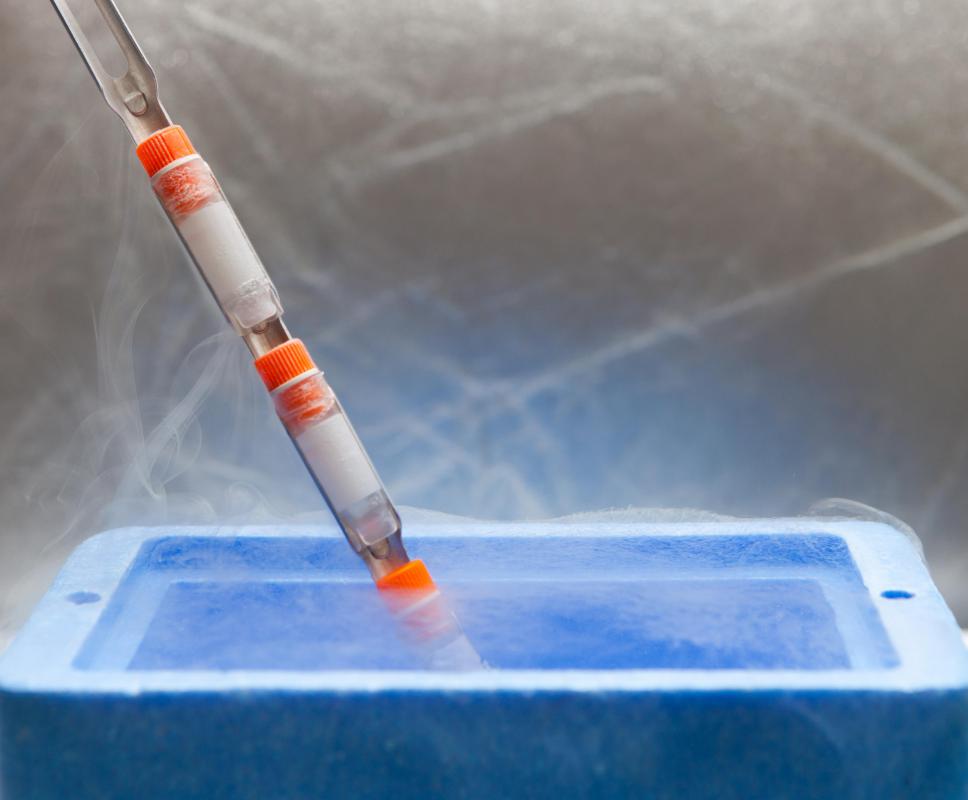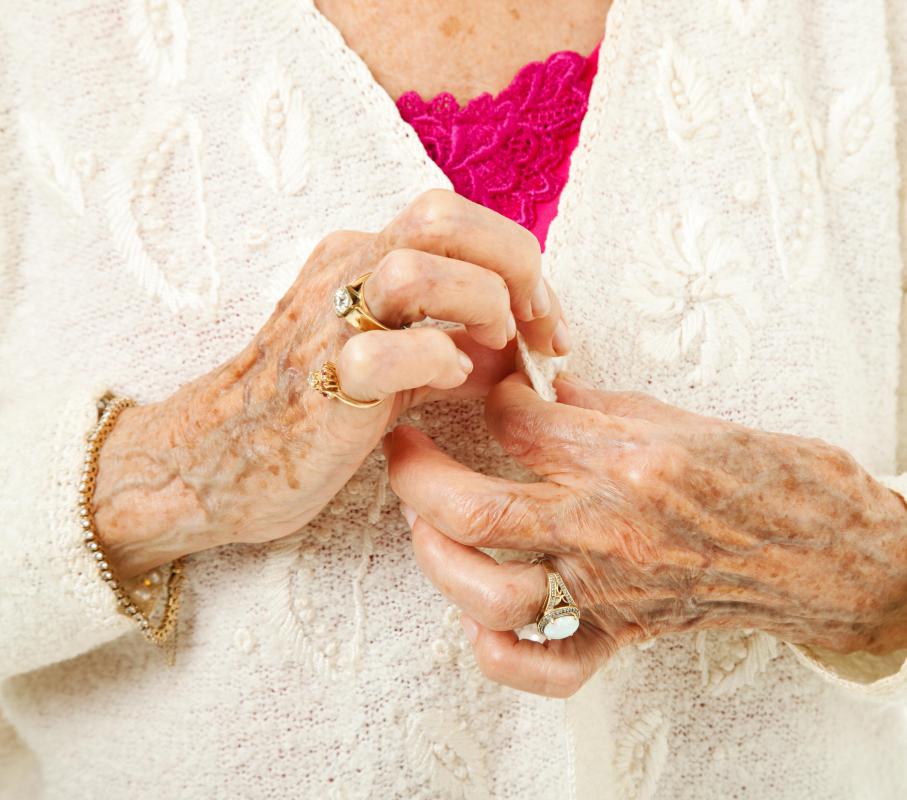At TheHealthBoard, we're committed to delivering accurate, trustworthy information. Our expert-authored content is rigorously fact-checked and sourced from credible authorities. Discover how we uphold the highest standards in providing you with reliable knowledge.
What Is a Myxoid Cyst?
A myxoid cyst, also known as a synovial cyst or a mucoid cyst, is not a dangerous condition. In this condition, fluid from degraded connective tissue forms a lump on a finger or toe. This type of cyst may indicate that the patient has osteoarthritis, but this is not always the case. Though a myxoid cyst can be treated relatively easily, it can return.
Most often, a patient will have a myxoid cyst on a finger, but in some cases, a toe is affected. It is almost always present on the last segment of the finger or toe, usually only a centimeter (0.4 inches) or less from the nail on one side. The nail can also develop an indented groove due to the presence of the cyst. In rare cases, this type of cyst can affect the fingertip, and some cysts may also grow under the nail itself.

The cyst is a skin-colored, round lump with a shiny, almost translucent surface, and inside the lump is a collection of thick, sticky fluid. This fluid, tinted a slight yellow or pink, is thought to come from the breakdown products of a joint. Most people only have one myxoid cyst at any one time, and if more than one are present, they are usually on different fingers.

As the cysts are produced by old joint tissue, the most common age for developing the condition is at 60 and over. The cysts are harmless and not infectious. Normally, the lumps do not cause any pain, but they can be damaged through regular activities and become more sensitive.
They can be unsightly, and relatively simple procedures can treat the problem. Squeezing the fluid out of the cyst, lancing it with a sterile needle, or compressing the cyst can all help to flatten the lump. Freezing the cyst off with liquid nitrogen or injecting it with medications such as steroids are other options, and surgical removal is also possible. Despite these treatments, however, myxoid cysts may return. Some cysts also disappear on their own over time.

Antibiotic treatment is only necessary if a cyst becomes red and painful after becoming infected. The presence of a cyst does not necessarily indicate that the patient has osteoarthritis, but it is possible. If osteoarthritis is the cause, then the cyst occurs because the lining of the joint has protruded out from the joint to the surface of the skin.
AS FEATURED ON:
AS FEATURED ON:














Discussion Comments
I had surgery on the fourth toe on my right foot two years ago by a orthopedic foot surgeon. He said the root is very close to the bone so surgery is indicated to remove fully. However, it was not successful. The cyst immediately returned as it was in the healing process. I only learned that they return from the internet.
My concern is if they can become a form of cancer. It is a constant cycle of swelling and draining. This surgeon said I can try surgery again but I am going for another opinion.
My year long bout with myxoid cysts came to an end when I started taking a combination of Fish Oil (1200 mg) and Vitamin D-3 (2000 IU). Here's the story.
I had suffered with this ailment for about a year and all the information I found on the internet indicated that no one was exactly sure what their cause. Some sites said that it was an onset condition to arthritis. Other sites said something about dead tissue from an old injury.
My cysts only became painful when they had swollen so much that they look like they were about to burst. I talked to my doctor about it and all he could recommend was to lance it for me.
Just by coincidence I was looking researching Vitamin D-3 because at 55 years of age there was good benefits to taking it. I just happen to be at Sam's Wholesale and noticed a bottle of vitamin D-3, but it had fish oil with it. I figured that it was better than nothing so I bought it. The bottle said take one a day, so that is what I did.
Two days after I started taking this formula, I noticed that the myxoid cyst (that was about to get big enough to lance) had shrunk up a little like a raisin. I kept take the vitamin formula and about two weeks later, the cysts were gone. Is it a coincidence? It has been six months and I still don't have any recurrences. These things use to "bloom" on my left finger every three weeks or so after I got them lanced. There was another one that looked like it was starting to grow on my right hand (both were index fingers) I just wonder if anyone else has had similar experience. This might be something that doctors don't know about.
I am retired and I don't work for anyone (in case you're wondering) Here is the exact formula that I bought from Sam's. Maybe some doctor can look into this:
Simply Right (Wellness & Nutrition) all natural enteric; fish oil (1200 mg) + Vitamin D-3 (2000 IU); (Double Omega 3 strength).
You might try some other equivalent brand that might work. And I don't know whether it was the fish oil or the vitamin D-3, or both.
Will my indented nail grow back normally after a mytoid cyst bursts?
I have had a cystic lump on my finger and I have had it about three years. Nothing has helped it go away.
I have been seen by the doctor and it has cost me over $1,000 for treatment. He has frozen and even cut it out and it has returned. I have stopped going to the doctor. It's very sore to touch. I'm glad it's on my finger and not my toe.
I'm 53 years old and I'm in great health besides this annoying, painful lump. The only thing that keeps is under control is the wart freeze. I put this on about two to three times per month.
Post your comments